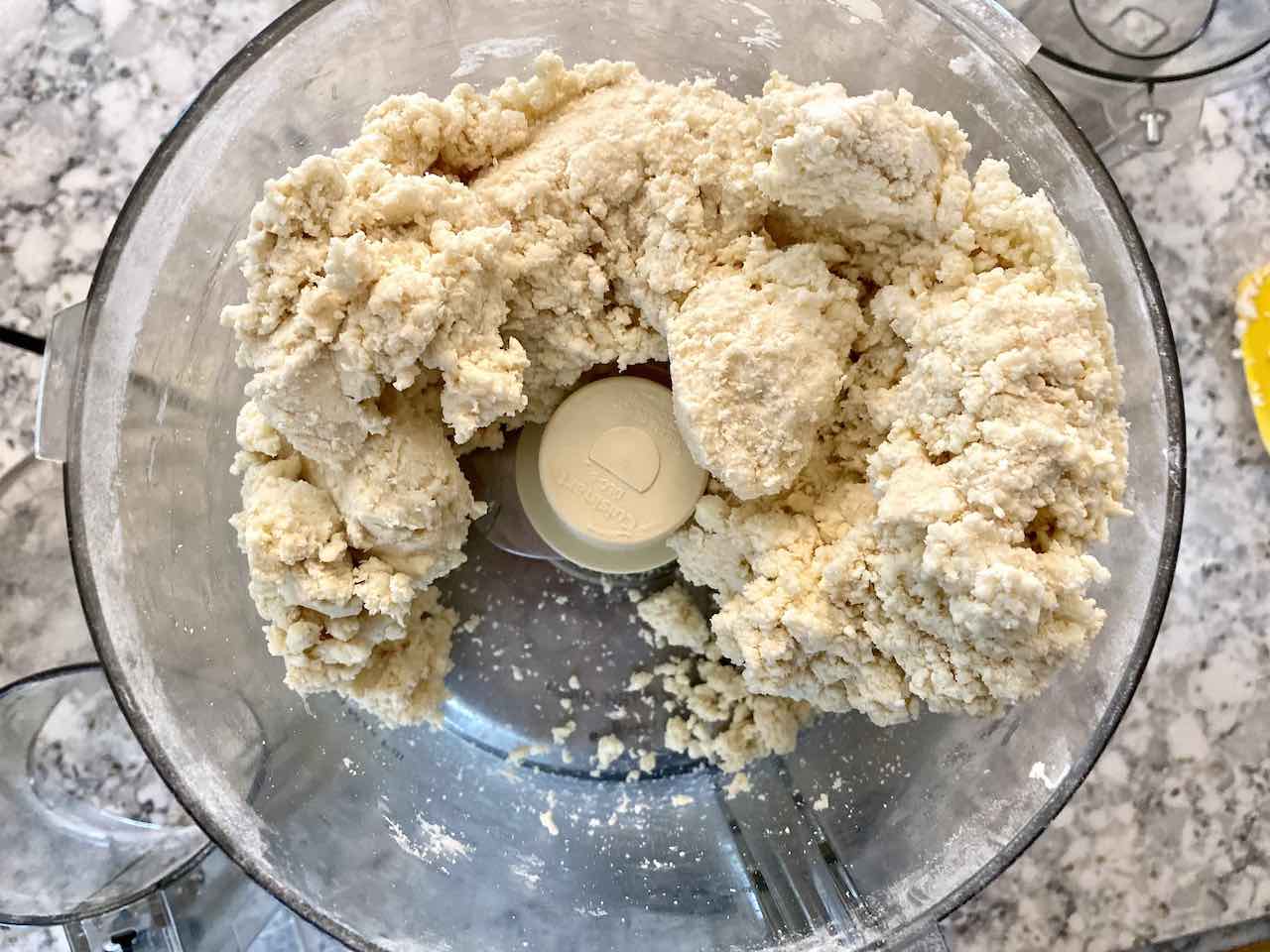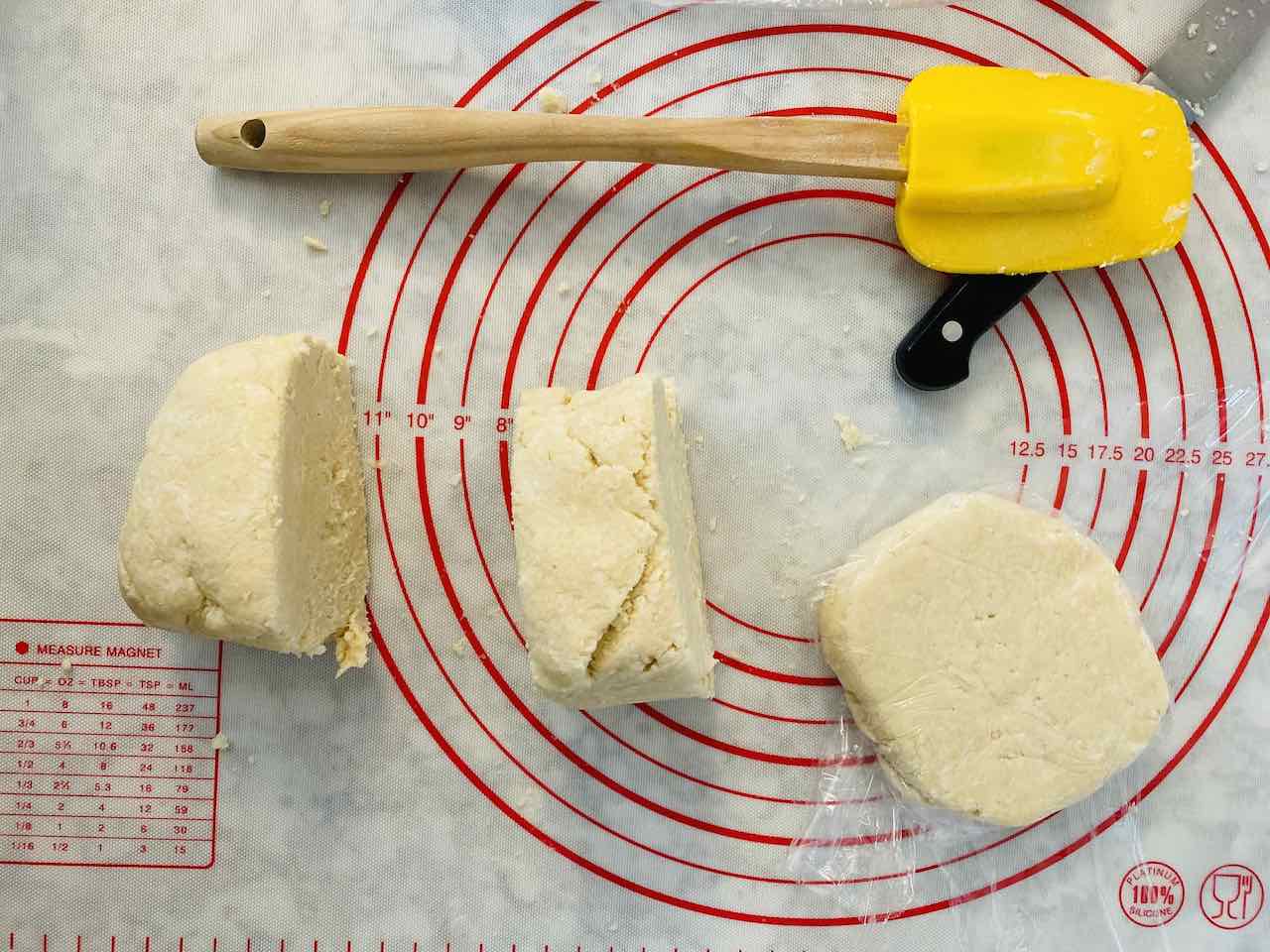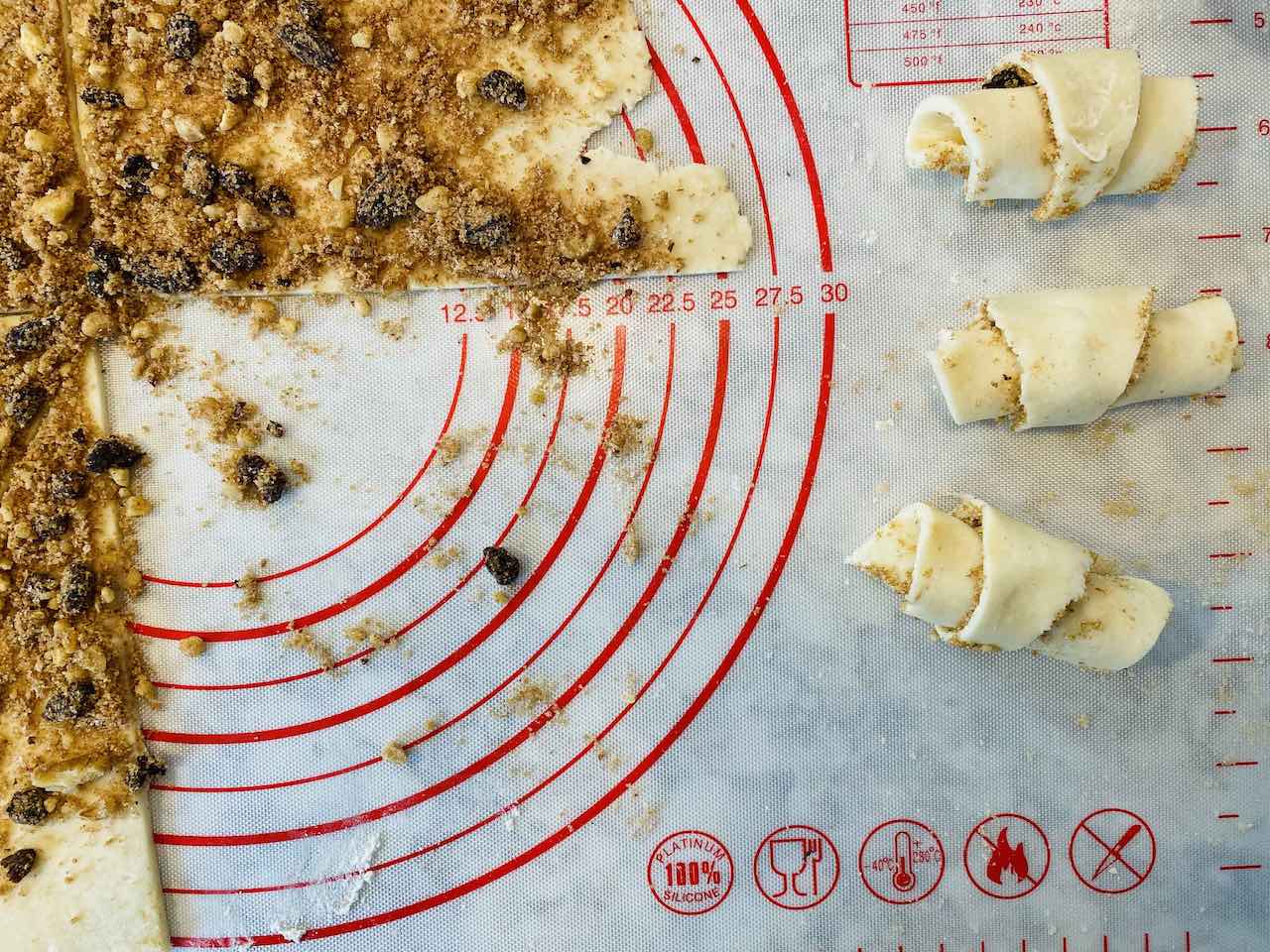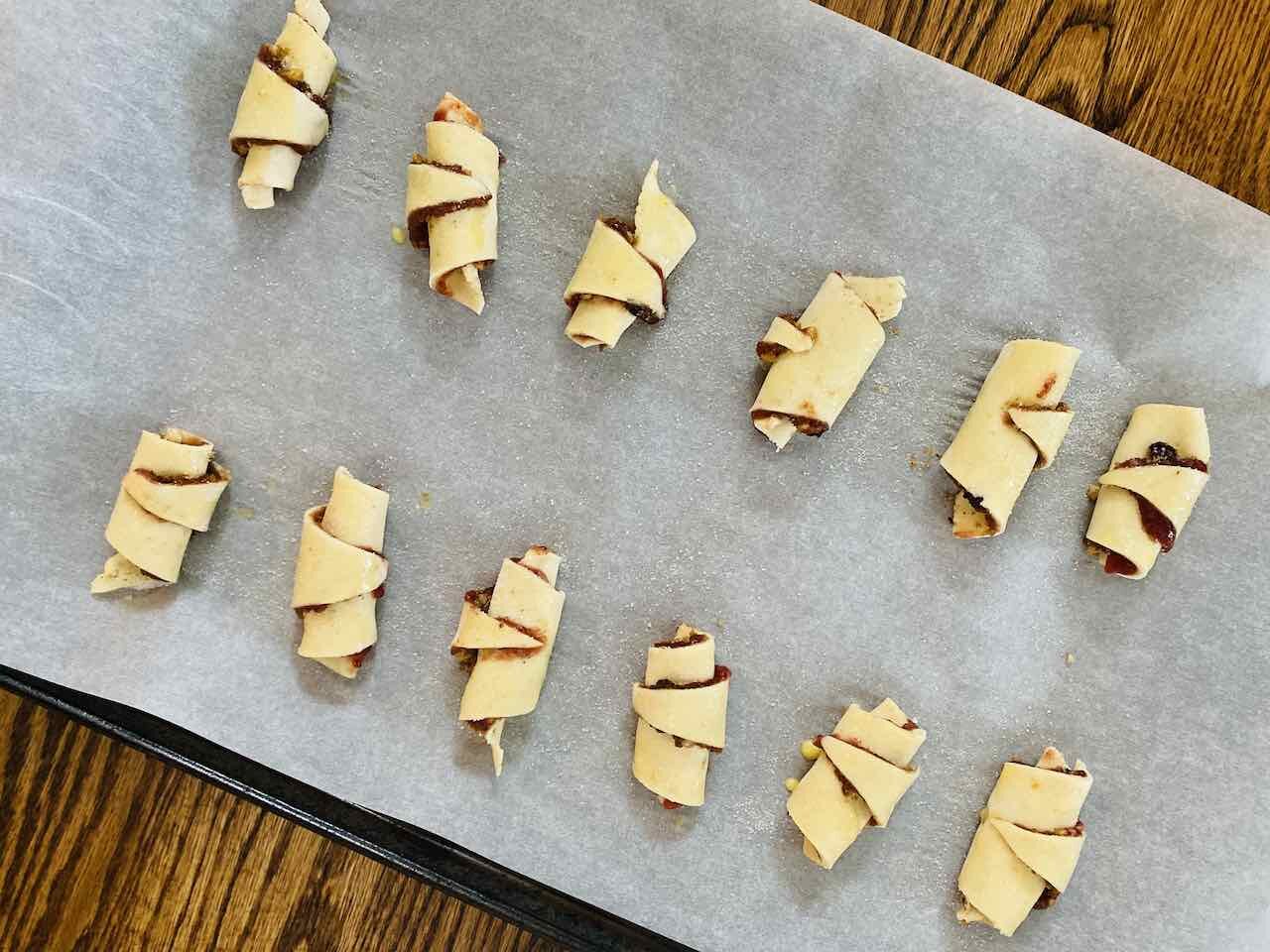Rugelach
In honor of Hanukkah, I made rugelach this week. Having never eaten homemade rugelach, I only had memories of dry, crumbly cookies. But the pandemic has instilled in me a desire to hold on to traditions – even ones I’ve never followed before. These small, crescent-shaped cookies are perfect for cold December evenings. They are flaky, crunchy, and just the right amount of sweet. (I gave some to a 90-year-old friend, Polly, who said they “tasted like Hanukkah.”)
Enough about rugelach – and on to this week’s ingredient: sugar. Sugar comes from both sugarcane and sugar beet. Unfortunately, both supply chains are rife with environmental and labor abuses, including forced and child labor. According to the US Department of Labor, sugarcane and sugar beet are both produced with forced and/or child labor in at least 20 countries across Asia, Africa, and Central and South America.
There are serious problems across the sugar industry, but I want to focus on the Dominican Republic, which exports a lot of sugar to the US. The Fanjul Corporation, a large producer of refined sugar owned by brothers Alfonso and Jose Pepe Fanjul, dominates the US sugar industry. With its subsidiaries, it produces over 7 million tons of sugar each year. This sugar is sold under a variety of brand names, including Domino, C&H, and Florida Crystals.
Central Romana, a subsidiary of the Fanjul Corporation (the Fanjul brothers are executives of both companies), is one of the most powerful companies in the Dominican Republic. It is the largest private landowner and employer in the country and it produces a lot of the Dominican Republic’s sugar. Yet the working conditions on Dominican sugar plantations are horrendous, as are the living conditions in towns near the plantations, known as bateyes. Whole families live in crumbling shacks that have no running water, no bathrooms, and no electricity. On some plantations, workers are still required to buy goods from the company-owned stores, keeping them in debt – a clear indicator of forced labor. Workers are paid per ton of sugarcane that they cut, but they aren’t always allowed to see the weighing, leaving them at the company’s mercy for how much they are paid. Many workers make just enough money to cover the cost of food.
There is a lot more to say about the sugar industry – including about companies forcibly displacing communities and about the environmental harm caused by growing sugarcane and sugar beets. But that is for future posts. I want to note here that part of the Fanjul brothers’ success in the US is linked to their lobbying and political power, both in Florida and with the federal government. They cover both political parties – one brother is a Democrat while the other is a Republican – and donate large amounts of money to both parties. This has bought them access and allowed them to shape policy.
Sadly, I have nothing positive to end with. I know of no good source for sugar. (But if you do, please let me know!) I’m used to friends pointing out the incongruousness of this blog explaining all the terrible things about an ingredient and then providing a recipe that includes that very ingredient. But the reason I keep writing, even when there is no good consumer option, is that I believe knowledge is itself powerful. It changes how people think about the food system and corporate power and, I hope, leads them to take real action – to lobby their congressmen, write to companies telling them to stop using forced or child labor, and push for strong regulation of corporations. While I try to buy the most ethical foods that I can, what we actually need is large-scale, structural change in the form of powerful laws and regulations that have real teeth and punish companies for violating human rights.
To learn more about the sugar industry, check out this great article on the bateyes in the Dominican Republic. You can also read more about a case that was filed last January against Central Romana for forcibly displacing twenty-four people from their homes in the middle of the night. If you want to learn more about the Fanjul brothers, read this New Yorker article from 2016. You can also watch the Rotten episode on Netflix about sugar.
Rugelach
Course: Uncategorized48
servings3
hours30
minutesAdapted from Rugelach by Dorie Greenspan (adapted by Emily Weinstein in the New York Times) and from Rugelach from Once Upon a Chef.
Ingredients
2 cups all-purpose flour
½ teaspoon sea salt
2 sticks (1 cup) unsalted butter, cold and cut into 4 pieces
8 ounces cream cheese, cold and cut into 4 pieces
½ cup light brown sugar
¼ cup granulated sugar
1 cup walnuts
½ cup raisins
4 teaspoons cinnamon
½ cup jam or preserves
1 egg
1 tablespoon cold water
Directions
- Add the flour, salt, butter, and cream cheese into a food processor. To start, pulse it about eight times then keep mixing until it becomes pebbly and just begins to form larger pieces. Pour it out onto a lightly floured surface and mold the dough together. Be careful not to overwork it.

- Shape the dough into a log and cut into four equal pieces. Place each piece in saran wrap and mold into a disc. Place in the fridge for at least two hours.

- In a food processor, mix the light brown sugar, sugar, walnuts, raisins, and cinnamon together and pulse until it becomes a coarse mixture.

- Roll out one disc at a time on a lightly floured surface to a circle about 1/8-inch thick. Spread about two tablespoons of jam on the dough and then sprinkle with one-quarter of the sugar and walnut mixture. Press the mixture down lightly into the dough. (You can also skip the jam and just sprinkle the sugar and nut mixture onto the dough.)
- Cut the circle of dough into twelve triangles. To do so, cut the dough in half, then into quarters. Then cut each quarter into thirds.
- Starting from the outside, roll up each triangle of dough towards the center. Place on a cookie sheet and place in the fridge for 30 minutes (if you have time).

- When ready to bake, make the egg wash. Crack the egg into a small bowl and add one tablespoon of cold water. Mix together, then brush each cookie with a small amount of egg wash. Sprinkle lightly with sugar.

- Bake on the middle rack in the oven for 25-30 minutes. The rugelach should be golden brown when done.

Notes
- You can adjust the filling to your taste. I used strawberry jam, but choose your favorite kind. You could also mix some chocolate into the nut and sugar mixture.





